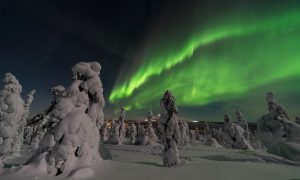Fracking fall-out: a review of water and greenhouse gas impacts indicates natural gas has potential but must be “done right”
In the latest issue of the new journal MRS Energy & Sustainability—A Review Journal, a group of eminent US scientists led by Dr. Douglas Arent, Executive Director of the Joint Institute for Strategic Energy Analysis (JISEA) at the Energy Department’s National Renewable Energy Laboratory in Colorado, looks at recent developments in the production and use of unconventional natural gas in the US—with a focus on implications on water management and greenhouse emissions.
This paper reviews aspects of the natural gas “revolution” in the US, as well as its impacts on the environment and trade-offs with particular environmental objectives. In doing so, it specifically focuses on recent developments in the fracking industry, looking at developments in the US.
“This study and JISEA’s larger body of work on natural gas examines potential for gas as an important part of pathways to a decarbonized energy future,” said Arent. “Multiple studies have identified natural gas development practices that can mitigate potential impacts to water quality, emissions, and other areas. What we found with this work is that if unconventional natural gas is produced and distributed responsibly, and incorporated into resilient energy systems with increasing levels of renewables, then gas can likely play a significant role in realizing a more sustainable energy future.”
Techniques for horizontal drilling combined with hydraulic fracturing (or ‘fracking’) for extracting shale gas were improved in the late 1990s and use of the technology spread quickly, resulting in increasing shale gas output as well as estimates of technically recoverable resources. The relatively rapid spread of fracking has also raised environmental and social concerns that the regulatory community and other stakeholders are currently grappling with.
The authors find that all phases of shale gas development have the potential to affect either the quantity or quality of local water resources. Hydrofracking can be water intensive, they conclude, and water resources in many areas where shale plays exist are already experiencing groundwater depletion due to drought conditions and over-consumption by domestic, agricultural, and industrial sectors.
Industry and stakeholder groups have not yet established a standard set of principles for managing water use or water quality, they argue, although there have been innovations to reduce water demands, increase recycling and reuse, and carefully manage disposal of solids. Another issue the authors highlight is that there is little consistency in regulations from one state to the next in the US regarding water and wastewater management practices associated with unconventional oil and gas development.
“The rapid pace of shale gas development in the US has naturally led to several gaps in knowledge about environmental impacts,” said Arent. “More transparent and accessible data related to water use and emissions from shale gas development and use, developed through partnership with industry, are essential to providing a more complete understanding of all the pathways to a decarbonized energy future.”
About MRS Energy & Sustainability—A Review Journal
MRS Energy & Sustainability—A Review Journal is published by the Materials Research Society, in partnership with Cambridge University Press. First published in 2014, it includes reviews on key topics in materials research and development as they relate to energy and sustainability.
The intended readership is a broad spectrum of scientists, academics, policy makers and industry professionals, all interested in the interdisciplinary nature of the science, technology and policy aspects of energy and sustainability.
About the Materials Research Society
The Materials Research Society (MRS) is an international organization of over 16,000 materials researchers from academia, industry and government, and a recognized leader in promoting the advancement of interdisciplinary materials research to improve the quality of life. MRS members are engaged and enthusiastic professionals hailing from physics, chemistry, biology, mathematics and engineering-the full spectrum of materials research.
Headquartered in Warrendale, Pennsylvania (USA), MRS membership now spans over 80 countries, with approximately 48% of members residing outside the United States. In addition to its communications and publications portfolio, MRS organizes high-quality scientific meetings, attracting over 13,000 attendees annually and facilitating interactions among a wide range of experts from the cutting edge of the global materials community. MRS is also a recognized leader in education outreach and advocacy for scientific research.
About Cambridge Journals
Cambridge University Press publishes more than 350 peer-reviewed academic journals across a wide spread of subject areas, in print and online. Many of these journals are the leading academic publications in their fields and together they form one of the most valuable and comprehensive bodies of research available today.
About Cambridge University Press
Cambridge University Press is the publishing business of the University of Cambridge. Dedicated to excellence, its purpose is to further the University’s objective of advancing knowledge, education, learning, and research. Its extensive peer-reviewed publishing lists comprise 45,000 titles covering academic research, professional development, more than 350 research journals, school-level education, English language teaching and bible publishing. Playing a leading role in today’s international market place, Cambridge University Press has more than 50 offices around the globe, and it distributes its products to nearly every country in the world.




























